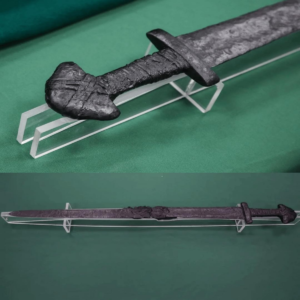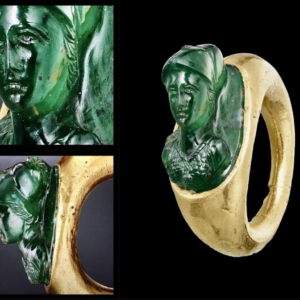The 14th-century apotropaic badge, featuring a unique depiction of a pilgrim with a vulva, phallus, and religious symbols, offers a fascinating glimpse into medieval beliefs and practices aimed at warding off disease, particularly the plague.

Created during a time when Europe was ravaged by recurring waves of the Black Death, this badge is a striking example of apotropaic devices—objects believed to have protective powers against evil, misfortune, or illness.

The image of the pilgrim, adorned with a pilgrim’s hat, rosary, and staff, combined with the symbolic vulva and phallus, reflects the era’s blend of religious and folk beliefs. The vulva, often associated with fertility and protection, and the phallus, linked to potency and strength, were thought to hold apotropaic powers, offering a shield against the feared plague.

The badge is a powerful reminder of how medieval societies turned to a variety of cultural symbols and superstitions for protection during times of crisis. It serves as both a religious and folk artifact, revealing the complex interplay between faith, fear, and folklore in late medieval Europe. Today, this rare artifact provides a tangible connection to the social and spiritual responses to one of the most devastating pandemics in history.





